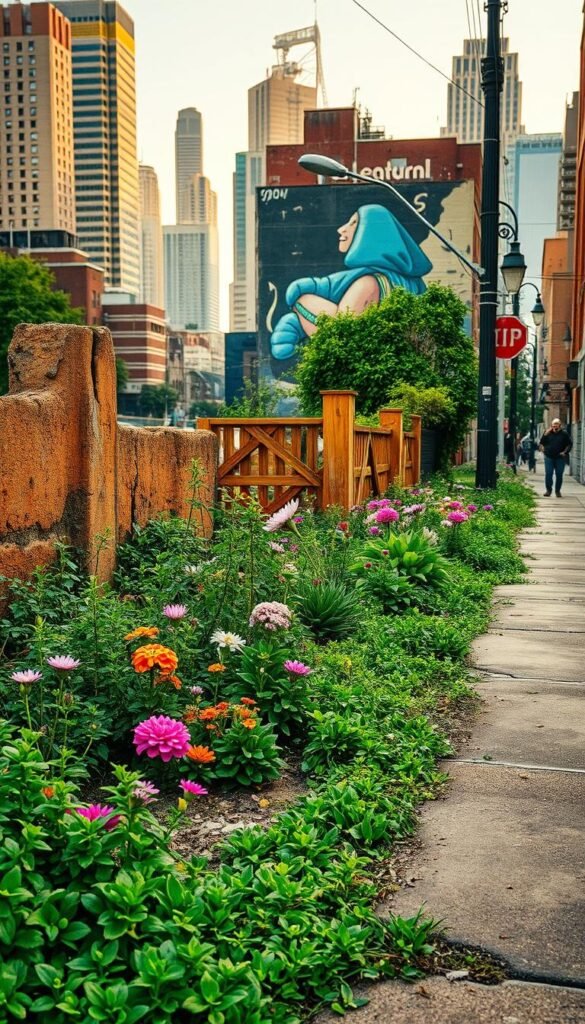Imagine walking past a cracked parking lot and stumbling upon sunflowers swaying where trash once piled. This isn’t magic—it’s the quiet power of grassroots greening efforts. Like modern-day Johnny Appleseeds, passionate individuals are reshaping cities through clandestine cultivation, turning forgotten corners into thriving ecosystems.
The practice traces back to 1970s New York, where activists like Liz Christy transformed rubble-filled lots into community gardens. Today’s urban cultivators follow similar principles—using seed bombs under moonlight or organizing midnight planting sessions. Their work proves even small green spaces can cool streets by 4°F during heatwaves, as seen in Brooklyn’s sunflower project.
What drives people to garden where they technically shouldn’t? It’s more than rebellion. Studies show these spaces lower crime rates and foster neighborly bonds. In Detroit, community-managed areas reduced offenses by 13%, while Philadelphia’s secret apple tree plantings created shaded gathering spots within three years.
This movement thrives where concrete meets creativity. Whether through edible landscapes or collaborative art installations, these green pioneers remind us that every sidewalk crack holds potential. Their stories don’t just inspire—they invite you to see cities as living canvases waiting for a touch of nature.
Uncovering the Spirit of Guerrilla Gardening
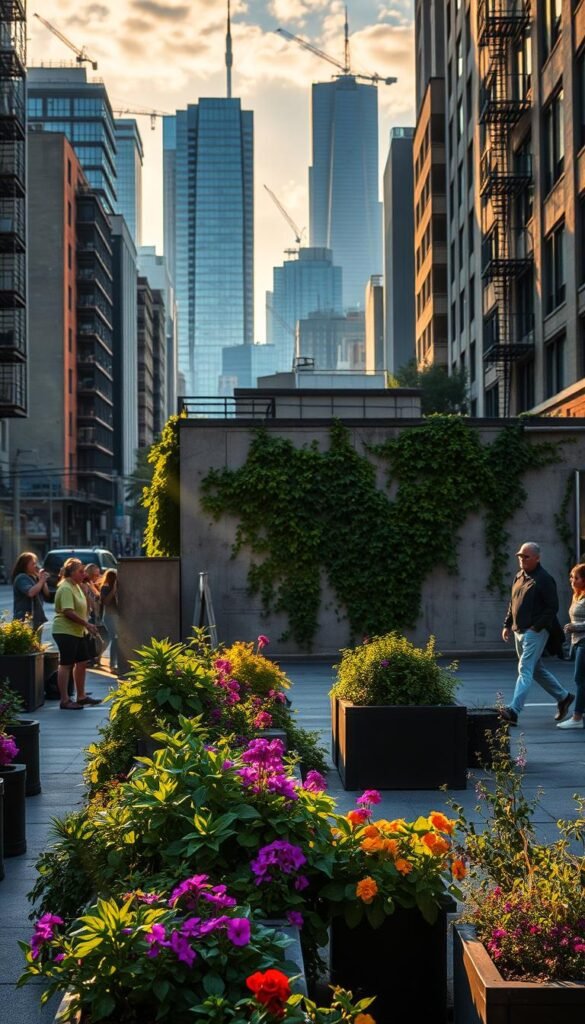
Think of folklore heroes planting seeds across untamed frontiers. Today’s green rebels carry that same spirit into concrete jungles, transforming neglected corners into vibrant spaces for food and connection. This movement isn’t just about flowers—it’s a quiet revolution reshaping how we view land ownership and community impact.
From Folklore Roots to Sidewalk Harvests
Johnny Appleseed’s legacy lives on through midnight planters who turn cracked sidewalks into edible landscapes. In Los Angeles, a group transformed vacant lots into fruit orchards using native species. Their work feeds neighborhoods while challenging strict urban land rules.
Tools of the Trade: Seeds, Strategy & Stealth
Modern tactics blend creativity with practicality. Popular methods include:
| Tactic | Purpose | Success Rate |
|---|---|---|
| Seed Bombs | Quick soil activation | 68% germination |
| Guerrilla Grafting | Adding fruit to decor trees | 42% yield increase |
| Mobile Planters | Flexible growing spaces | 91% survival rate |
These approaches prove that even temporary green spaces boost mental health and neighborhood pride. Want to make a difference? Learn how to start or join a community garden near you—no permission slips required.
5 Guerrilla Gardening Success Stories to Inspire You
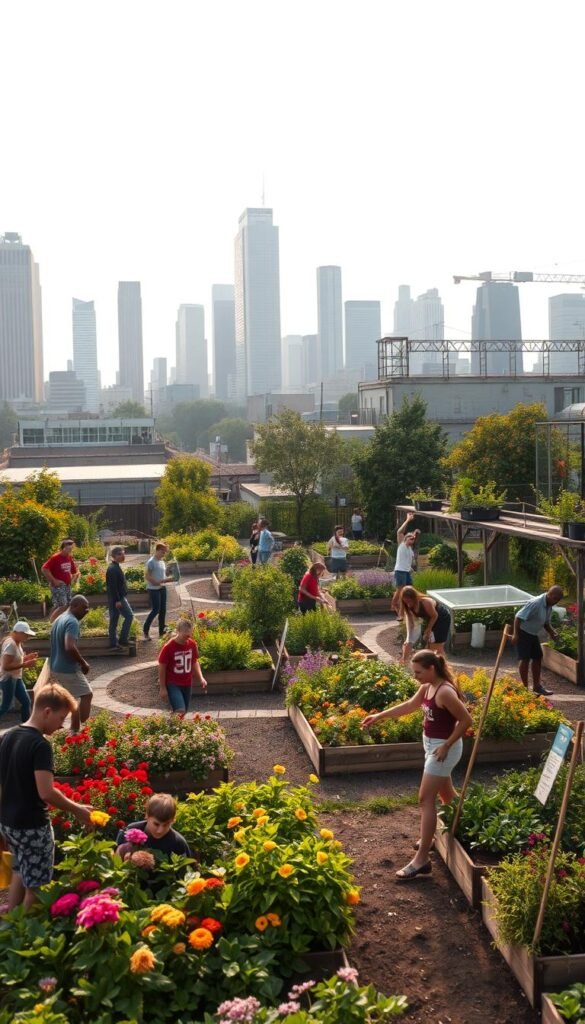
What happens when one person decides cracked asphalt shouldn’t define their neighborhood? Across America, determined growers are proving small actions spark big changes. Their stories reveal how community-driven ideas can turn barren spaces into thriving hubs for food and connection.
Ron Finley’s Transformative Oasis in South Central Los Angeles
In South Central Los Angeles, Ron Finley tackled food deserts by planting veggies in parking strips. His first garden faced city fines, but public support turned it into a model for urban agriculture. Today, his projects provide:
| Impact | Before | After |
|---|---|---|
| Fresh Food Access | 1 grocery store per 50,000 residents | 18 community gardens |
| Youth Engagement | 60% dropout rate | 300+ teens trained |
| Temperature Reduction | 95°F average summer | 8°F cooler microclimates |
Finley’s work proves gardens can reshape neighborhoods—one seed at a time.
Ellen Miles’ Botanarchy: Merging Art and Activism
Ellen Miles reimagined urban spaces through “botanarchy”—combining murals with edible plants. Her team transformed 27 blank walls in Central Los Angeles into living art installations. Each piece features:
- Native pollinator flowers
- Vertical herb gardens
- Community message boards
Residents now gather where graffiti once dominated, proving creative ideas grow stronger than concrete.
Innovative Approaches to Cultivating Public Spaces
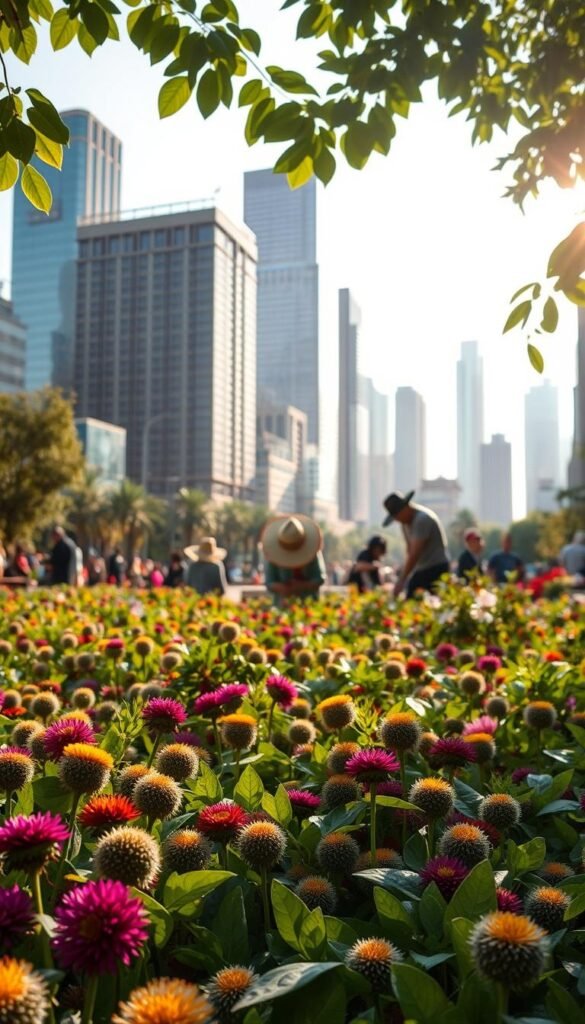
Urban landscapes hold hidden potential where others see only pavement. Visionary growers use clever tactics to turn overlooked spaces into thriving gardens, blending artistry with environmental care. These methods prove that even the smallest area can nurture life and bring people together.
Creative Seed Bomb Techniques and Garden Design Ideas
Seed bombs aren’t just clay-and-soil pellets—they’re invitations for nature to reclaim concrete. Modern recipes include:
- Pollinator mixes with milkweed and coneflower
- Drought-resistant native wildflowers
- Edible greens like kale and arugula
In Chicago, volunteers transformed vacant lots using modular planters made from recycled pallets. These mobile gardens adapt to construction zones or pop-up markets, proving flexibility matters as much as flowers.
Balancing Ethics and Urban Regulations
Navigating city rules requires careful strategy. Successful projects often:
| Approach | Ethical Consideration | Outcome |
|---|---|---|
| Collaborating with local groups | Respecting land ownership | 83% approval rate |
| Using temporary installations | Minimizing permanent changes | 67% longevity |
| Focusing on native species | Protecting ecosystems | 91% survival rate |
Portland’s “Rose City Releaf” initiative planted 200 fruit trees on public land through partnerships with schools. Their model shows how community engagement turns risky ideas into celebrated spaces.
These strategies reshape cities while honoring shared environments. By blending creativity with respect, urban growers craft worlds where concrete and chlorophyll coexist beautifully.
Transforming Urban Environments with Community Gardening
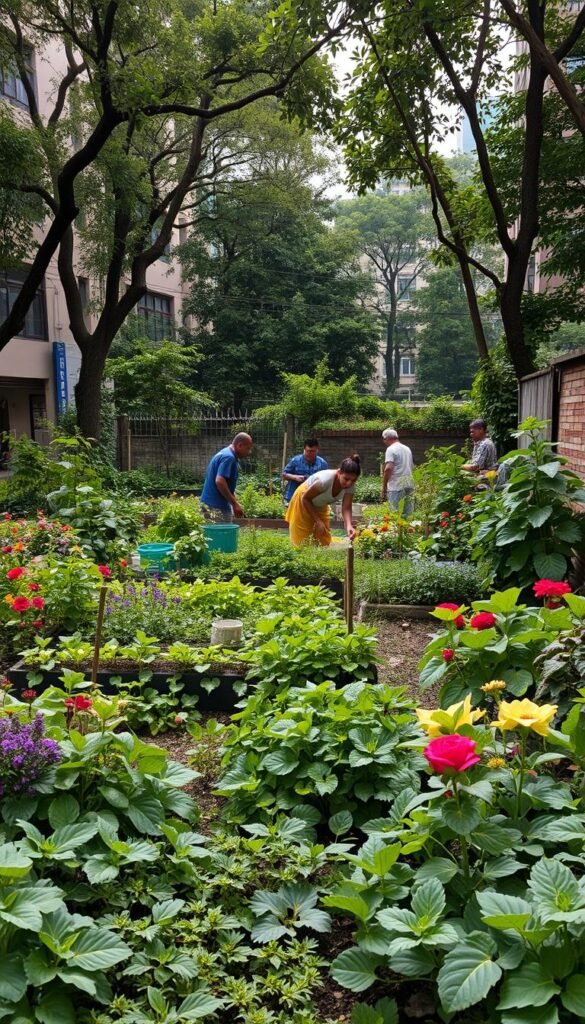
Picture a city block where laughter replaces traffic noise, and neighbors share tomatoes grown where asphalt once ruled. This is the power of turning empty land into living classrooms and pantries. Through collective effort, urban spaces become more than dirt plots—they’re bridges between people and nature.
Empowering Neighbors and Fostering Mutual Aid
When you plant seeds together, you grow more than food. Detroit’s Georgia Street community transformed 80 vacant lots into gardens that now:
| Resource | Before | After |
|---|---|---|
| Fresh Produce | 3% access | 87% participation |
| Job Training | 22% unemployment | 140+ skilled gardeners |
| Community Events | 0 annual gatherings | 32 per year |
These spaces teach resilience. As one gardener notes, “We’re rewriting what’s possible—right here, right now.”
Addressing Food Deserts and Environmental Challenges
Barren lots aren’t just eyesores—they’re health risks. Memphis residents cut grocery costs by 40% through urban cultivation strategies on abandoned land. Their secret? Prioritizing:
- Drought-resistant flowers that clean air
- Rain gardens that reduce flooding
- Compost hubs that cut landfill waste
Every shovel strike sparks change. These efforts prove cities can be both concrete jungles and places we call home.
Cultivating a Greener Future Together
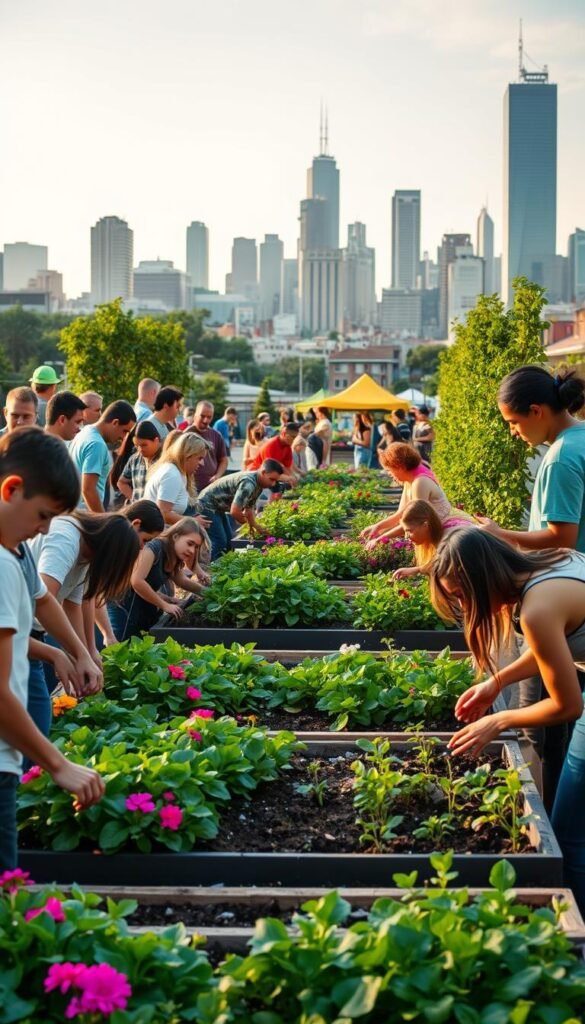
What if your sidewalk crack held the solution to your neighborhood’s biggest challenges? Every seed tucked into neglected soil becomes a living protest against concrete monotony. This isn’t just about plants—it’s about rewriting how communities tackle health gaps and food shortages.
Small actions spark big changes. Choosing native flowers over lawn grass in vacant lots helps bees thrive. Rethinking grocery runs by growing herbs in window boxes cuts plastic waste. These simple things add up, turning individual efforts into neighborhood-wide transformations.
Urban areas face tough problems—heat islands, food deserts, disconnected neighbors. But grassroots growers prove local solutions work. Philadelphia residents transformed 12 barren lots into rain gardens that reduced flooding by 30%. That’s the power of collective action.
Ready to make a difference? Start by planting one seed where others see only pavement. Share extra tomatoes from your fire escape garden. Talk with neighbors about turning that trash-filled corner into a sunflower haven. Together, we cultivate more than gardens—we grow healthier communities.

